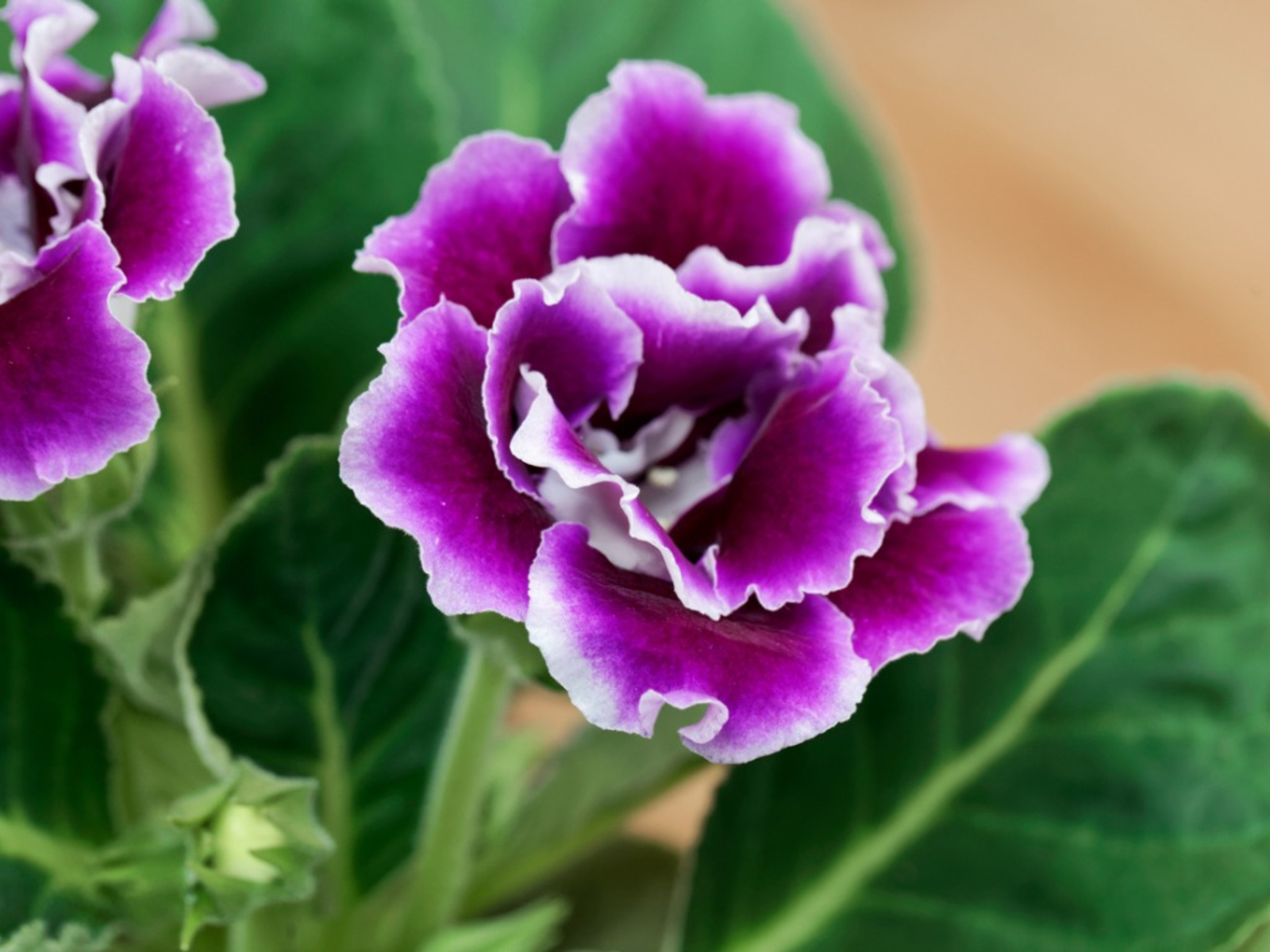
Gloxinia is native to Brazil. In the first half of the 19th century, she came to Europe. People have been decorating their houses with fresh flowers for more than one century. Most likely, initially, there was a need to learn how to grow medicinal plants in winter at home. Later, medicinal plants were replaced by home flowers valued and appreciated in our time for their decorative foliage and extraordinary flowering.
Plants from deserts, tropics, and subtropics have appeared in homes and greenhouses after discovering new lands. This is how the gloxinia plant, the most beautiful representative of the Gesnerian family, fell on the windowsills of houses.
The botanical name of this plant, Sinningia (Sinningia), comes from the surname of Wilhelm Sinning, who was at one time the main botanist of the botanical garden of the University of Bonn. Sinning has long been engaged in selecting tropical beauty, resulting from which many beautiful varieties of flowering plants have been bred.
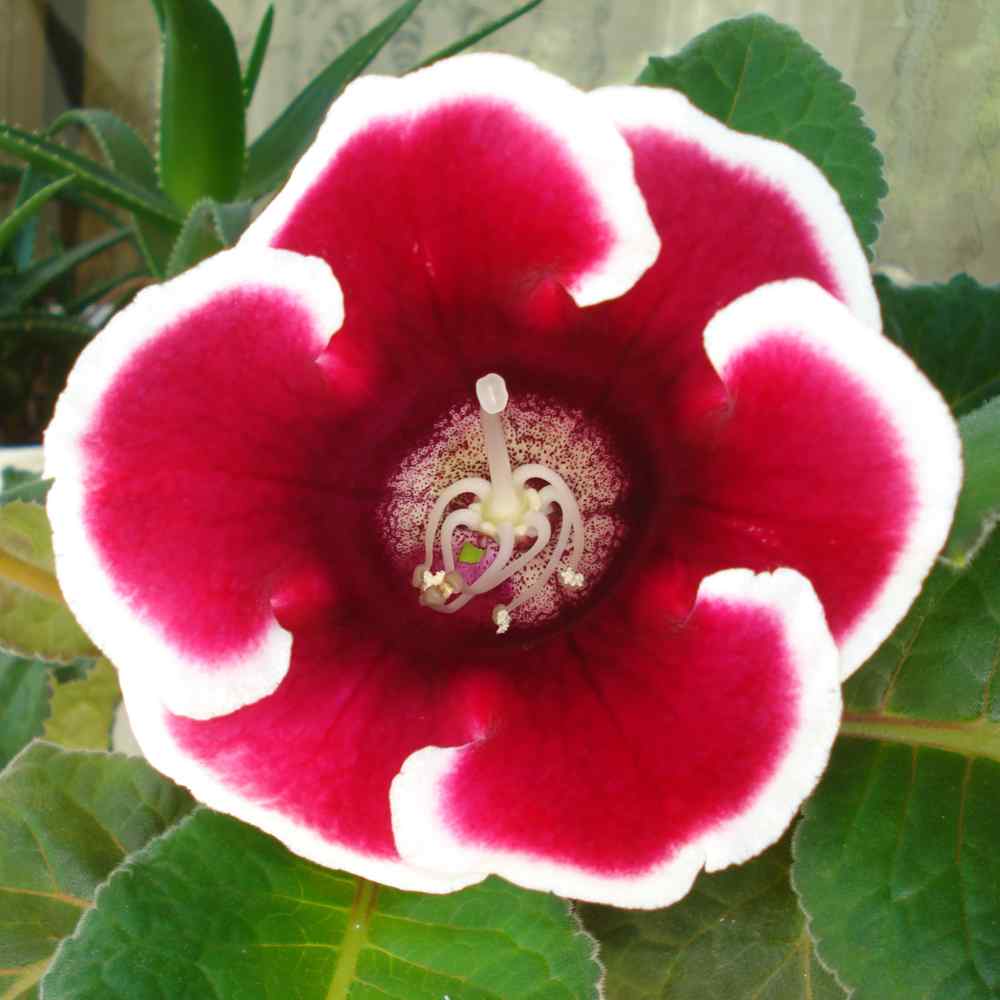
By this time, Gloxinia, named after the physician and German botanist Peter Gloxin, was already a common indoor plant. And so it happened that the name “Sinningia” remained for botanists, and “gloxinia” is a more familiar name for flower growers.
Gloxinia flowers are similar to bells, which can be simple and double, in various colors, and have contrasting and ruffled edges.
The types of gloxinia are varied. They can differ in the size of the plant in diameter, the shape and color of foliage and flowers, and the length of the peduncles. Nevertheless, you can enumerate for a long time the distinctive features and advantages of this extraordinary plant. The main thing is that it is in caring hands.
Gloxinia Plant Species
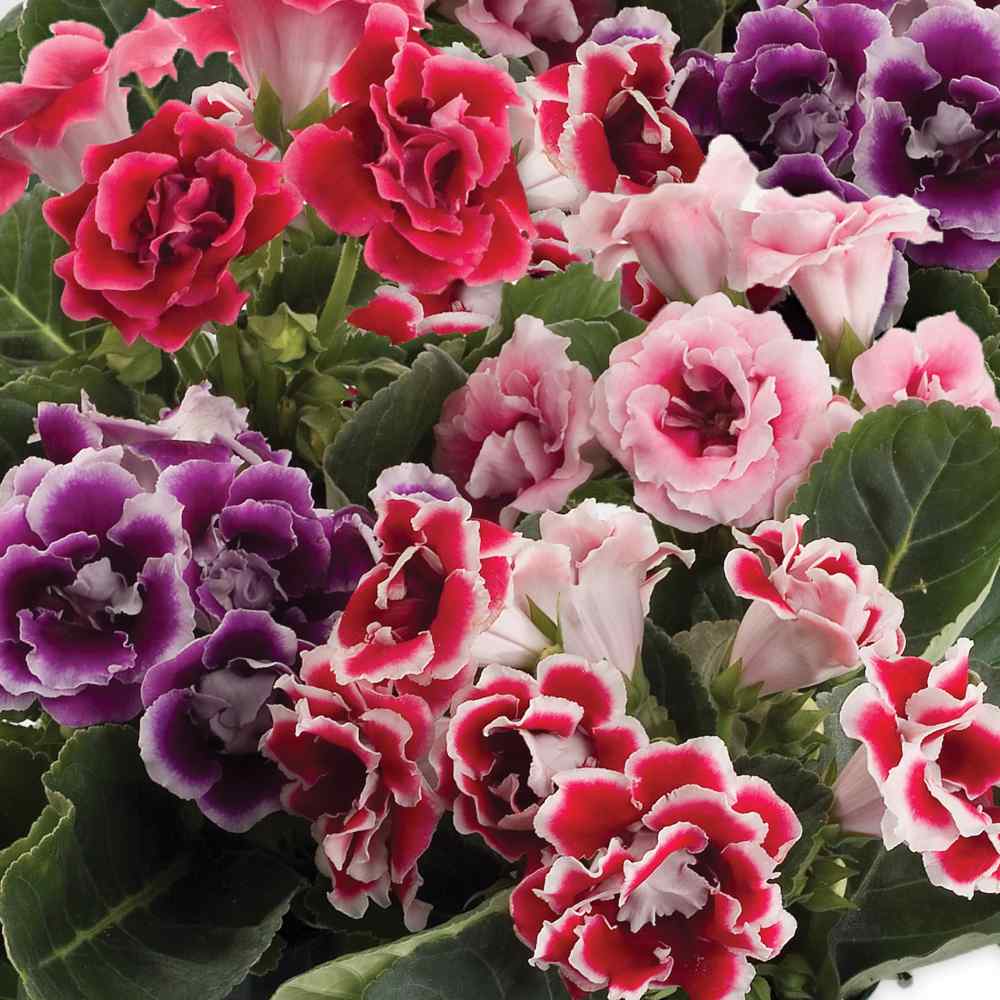
Gloxinia terry is divided into many subspecies, the beauty of which cannot be enumerated. Large double and double flowers have an incredible number of all kinds of colors and combinations of shades. The length of the peduncle also depends on the variety.
Gloxinia perennis. A feature of speckled or perennial gloxinia is leaves with a reddish tint below. Several axillary flowers are collected on one leg. Shoots are speckled, fleshy. Plant height 50-70 cm.
Gloxinia royal. The height of the thickened stems is 10 cm. Each stem has 4 to 6 pairs of oval-shaped leaves with a dark green color and velvety texture. Dark purple bell-shaped flowers, slightly drooping, are located on peduncles, the length of which can reach 20 cm.
Gloxinia is beautiful. Outwardly similar to the royal. The only difference is in the lighter color of the leaves and the variety of shapes and shades of flowers.
Gloxinia is tiny. Plant height only 2.5 cm. Velvety oval leaves up to 1 cm in length. On small pedicels, there is one flower each, the corollas of which have a short spur, purple on top, white on the bottom.
Planting and caring for the plant
Planting and growing gloxinia at home is a simple process, but it has its own rules and characteristics. Preparing the soil and choosing dishes for planting a plant, you can use purchased soil or prepare it yourself. To do this, you need to make a mixture in the following proportions:
- 2 parts of leafy soil
- 1 part of peat (greenhouse land is possible)
- 1 part river sand
The soil should be of low acidity and breathable, that is, loose. For greater safety, self-prepared soil is recommended to be disinfected. To do this, you can use the drug “Maxim,” which is diluted at the rate of 1 ampoule of the drug for 2 liters of water. There is good drainage at the bottom of each pot.
The root system of gloxinia is superficial. Therefore, the dishes for planting the plant must be chosen shallow but wide. For normal development, the distance between the pot walls and the large tuber should be 4-5 cm. For a small one, 3-4 cm is enough. Dishes are suitable for both earthen and plastic.
Planting a Tuber
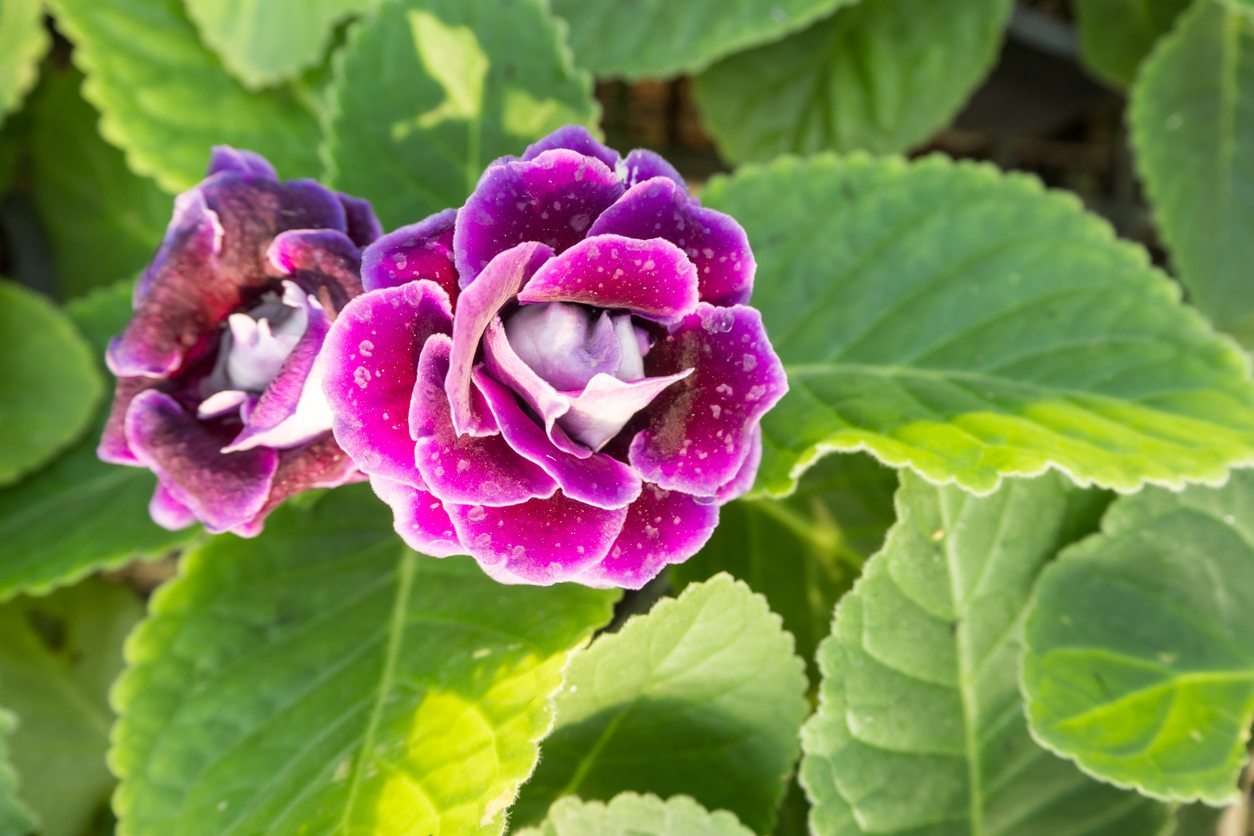
In February-March, gloxinia tubers can be “woken up” from winter “hibernation.” If they spent the winter in a pot of soil, then the tubers are removed and cleaned of soil. Each tuber is carefully examined, old roots are removed from it. Rotten areas are carefully cut off with a knife and sprinkled with crushed coal. Before planting, the tubers are dried for 24 hours.
To prevent various diseases, it is advisable to soak the tuber before planting for half an hour in a weak solution of potassium permanganate. After carrying out the preparatory processes, the tuber is planted in a prepared container while deepening it into the ground only by 2/3. The pot with moistened soil is covered with foil and placed in a place with sufficient lighting.
The planted tuber needs ventilation. Therefore, the film is removed twice a day for 30 minutes. This happens until the first pair of leaves appear. Next, you must remove the film, and the tuber must be sprinkled with earth by 1 cm. Finally, in order not to flood it, watering is required in small portions.
Lighting
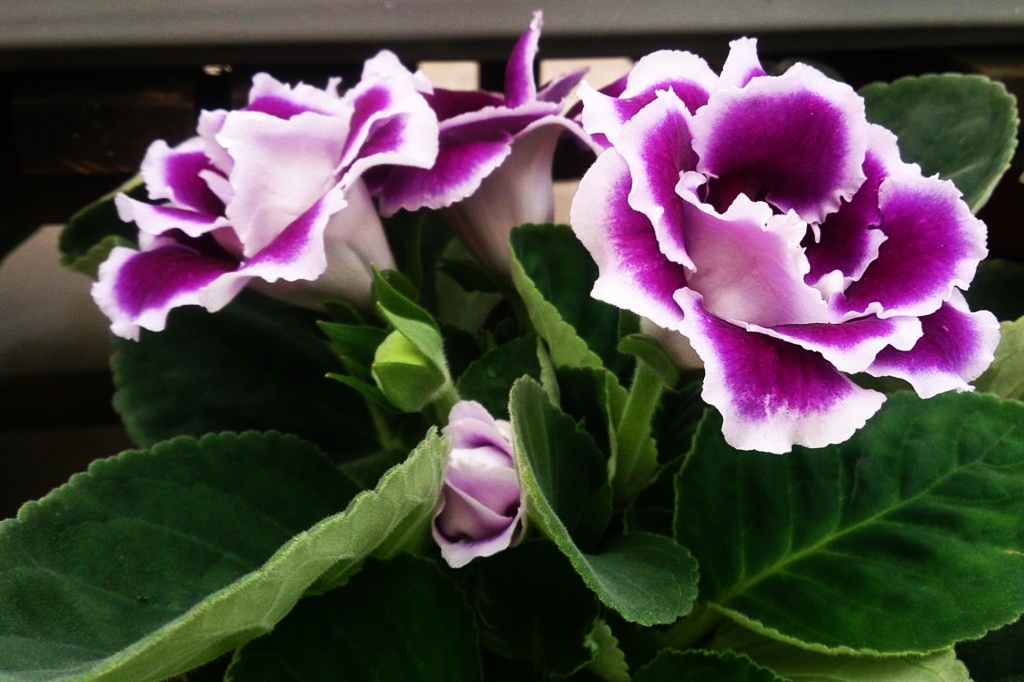
How to care for gloxinia if it is photophilous? First, of course, put flower pots in well-lit places. The light should be bright and diffused, but not like direct sunlight, from which flowers quickly fade.
Gloxinia “loves” good and long-lasting lighting. But on the south window, she will feel good only in the spring rays of the sun. With the onset of summer, the plant must be shaded or removed to the eastern windows.
Manage Temperature
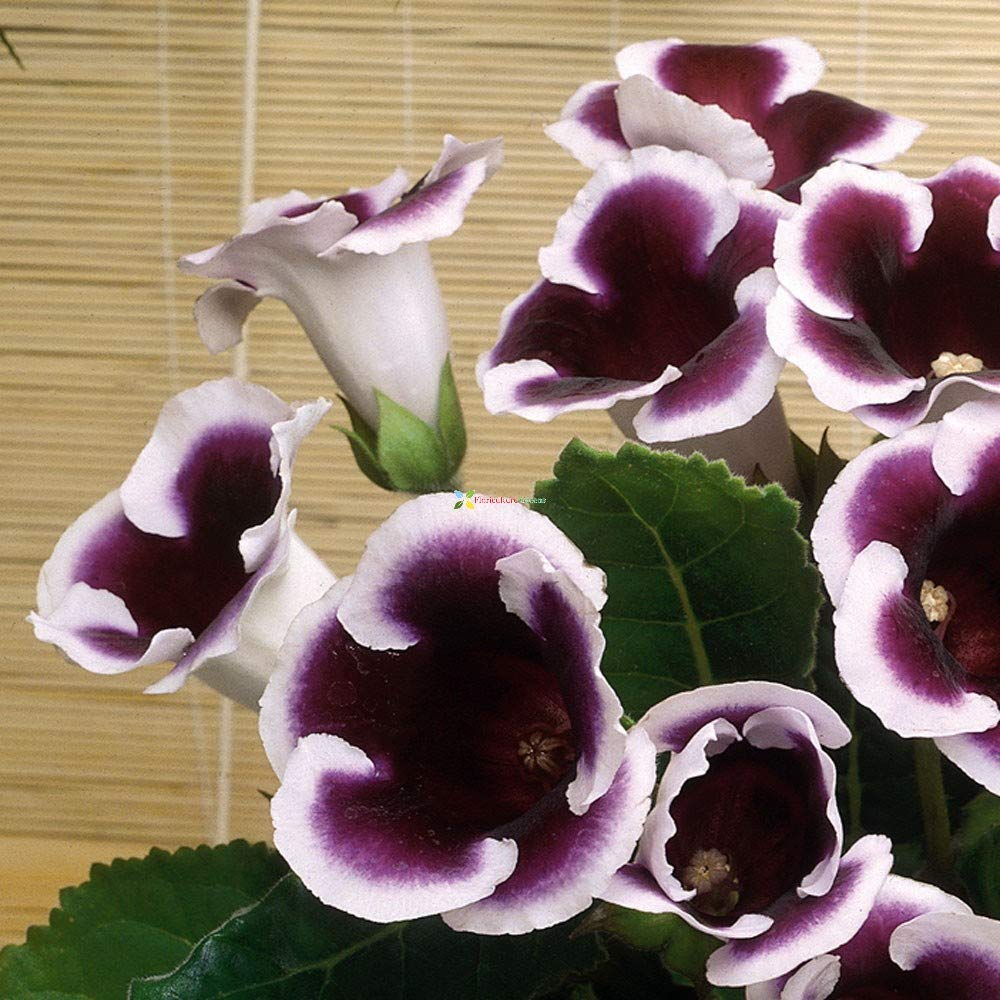
Gloxinia does not tolerate temperature extremes. A temperature of + 25 ° is quite suitable during the germination period of the tuber. After the plant’s rooting and its vegetative mass grow, the temperature can be reduced to + 22 ° – during the day, at night + 18 ° is sufficient. A lower temperature will slow down the development of the plant.
Air Humidity
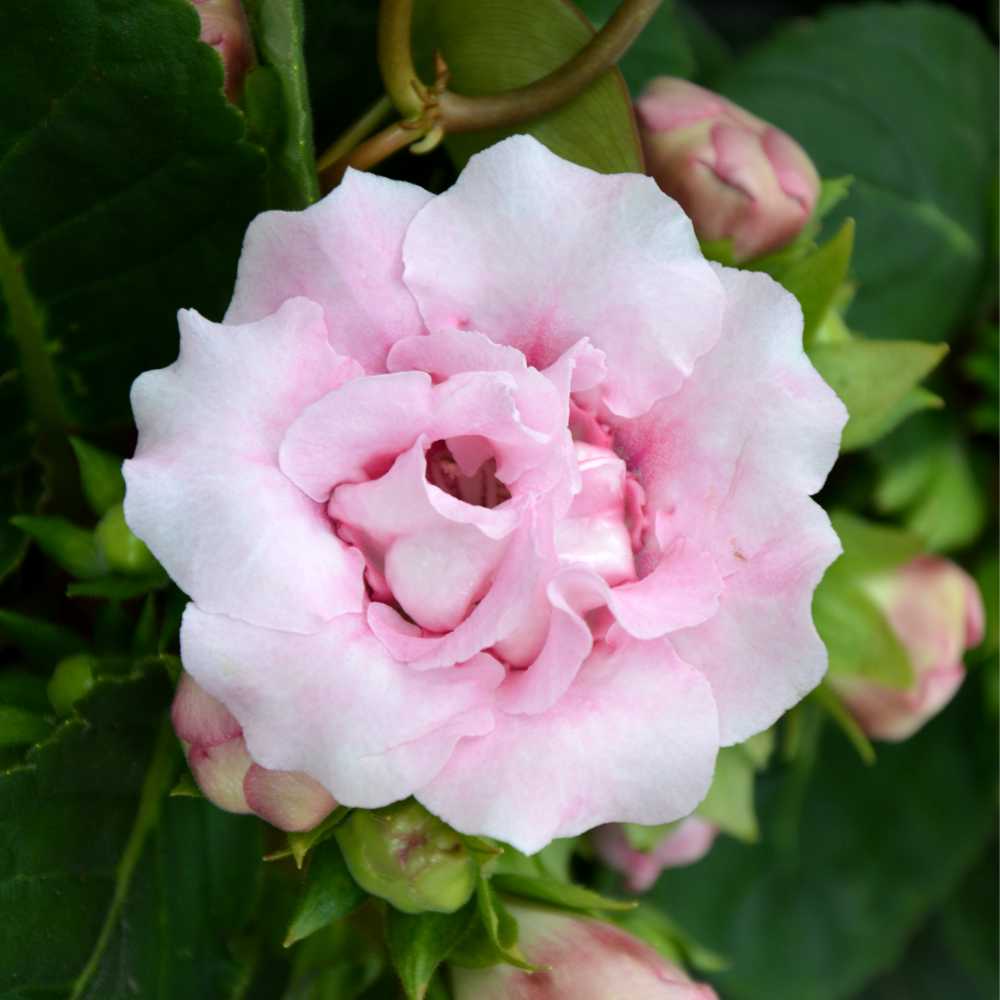
The period of growth and flowering of gloxinia must be accompanied by sufficient air humidity. With insufficient moisture, plant growth slows down, and the leaves curl. The buds fade without opening.
To maintain the required ambient humidity, flower pots are placed on pallets with wet moss or expanded clay. You can also humidify the air around the plant by frequent spraying with a fine spray. However, you should remember that due to leaf pubescence, direct spraying of the plant is unacceptable! Otherwise, spots will appear on the gloxinia, which will ruin its appearance, which is, in general, grown.
Watering and Feeding
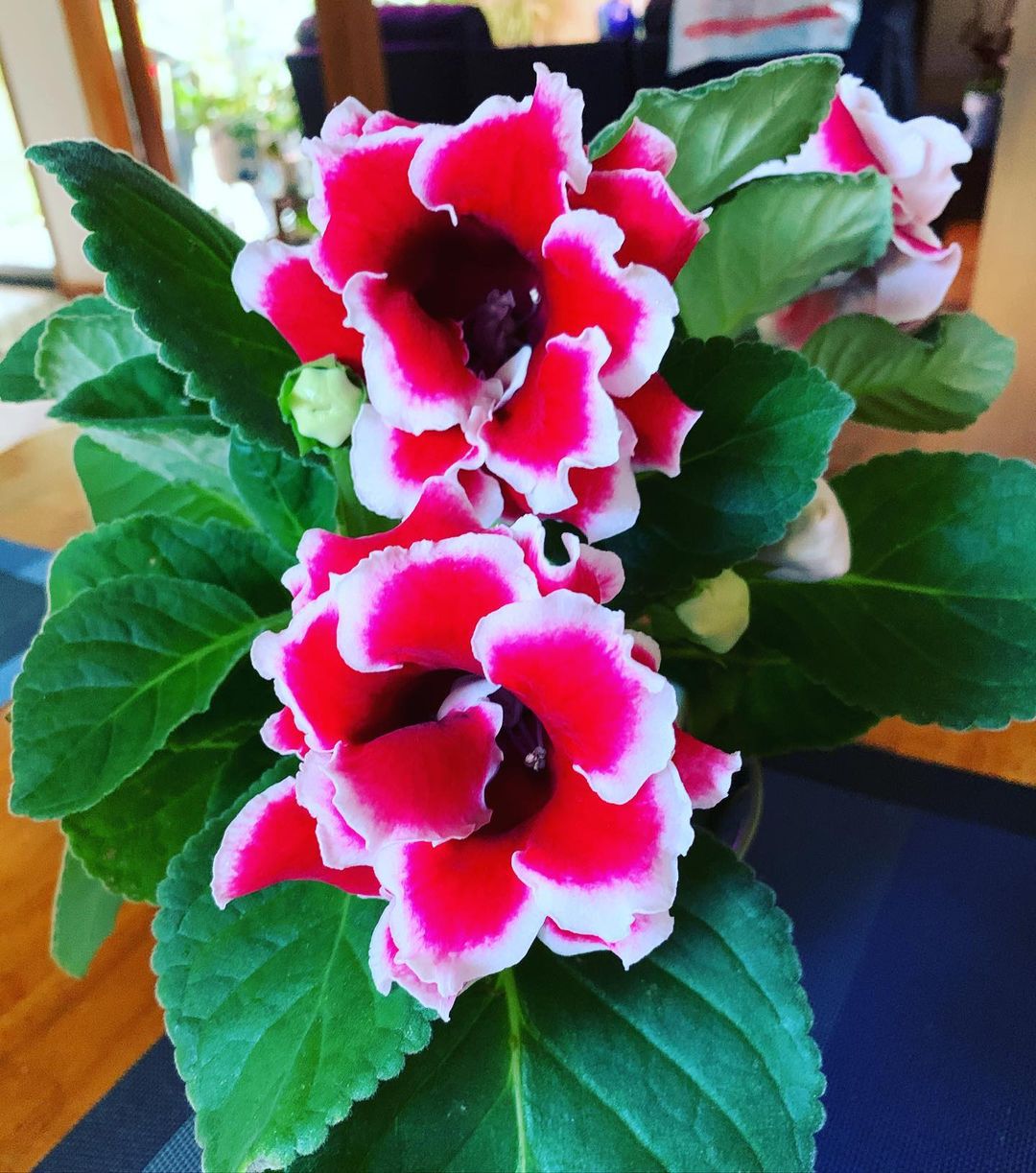
Abundant watering is necessary during the growing season of the plant. The settled water, which should be 2-3 ° higher than room temperature, is poured into the pan or along the edge of the pot. At the same time, you must remember that the water accumulated in the sump will have a detrimental effect on gloxinia.
In the summer, it is enough to water the flower 2-3 times a week. From one to another, watering, the earth should dry out. In cold, cloudy, and rainy weather, the plant is watered less frequently. Watering begins to be reduced after the end of the flowering period. At the beginning of October, the number of irrigations decreases again. The flower is already beginning to prepare for the dormant period. Gloxinia is practically not watered in winter, but drying out of the soil should also not be allowed.
From April to August, the month of a beautiful home flower can be delighted with special fertilizers for flowering indoor plants sold in abundance in specialized stores. Once every 7-10 days, fertilizing is carried out, it must halve only the dose indicated by the manufacturer. When dormant, the tubers should not be fertilized.
If you notice that gloxinia does not bloom, then there are reasons for this:
- insufficient feeding; bad light
- oversaturation of the soil with nitrogen fertilizers
- cold or dry indoor air
- too large a flower pot
- improper care during the rest period
Try to correct the underlying causes to resume the normal growth and flowering of the plant.
Reproduction of Gloxinia
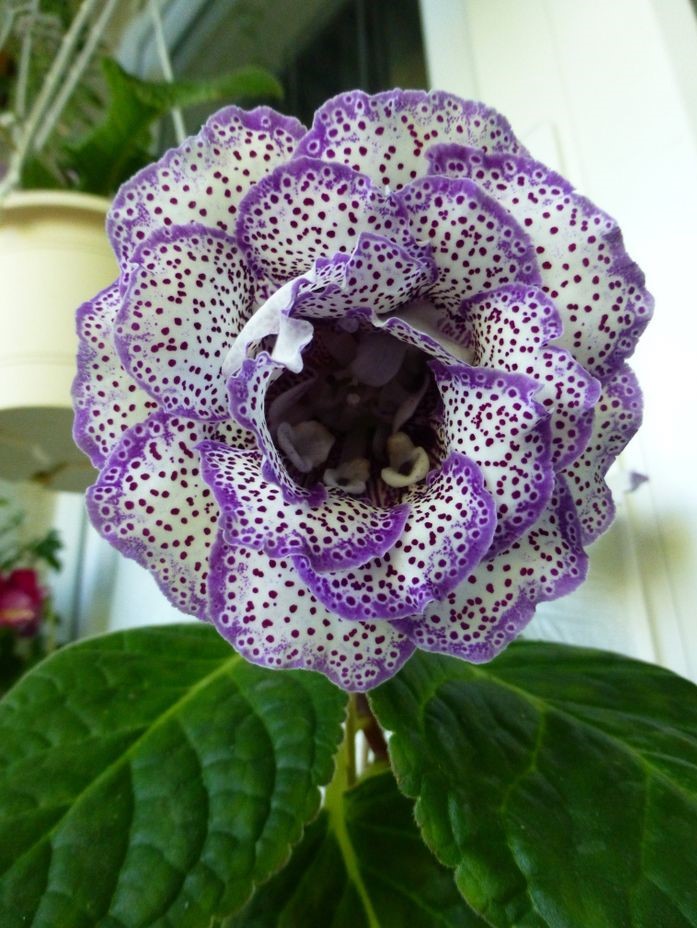
The plant is propagated in several ways:
- seeds
- leafy cuttings
- tubers
- Gloxinia from seeds can change in appearance, but flower growers use this method. Seeds are sown from November to February in a mixture of leafy soil, peat, and sand (1: 1: 1). Low wide drawers are placed in a warm, bright place. Seed soil is regularly sprayed with warm water. The sprouts will appear in a couple of weeks. When two leaves appear, the seedlings dive from each other at a distance of 2 cm, when the third pair appears – 5 cm. The third pick is performed with sufficiently developed seedlings. The distance between them is maintained at at least 10 cm. With proper care, the flowering of gloxinia can begin in seven months.
- When propagating by leaf cuttings, it is necessary to cut off a young leaf from a flowering plant with a piece (1 cm) of the petiole. Peat (0.5) and sand (1) are used for planting. The stalk is rooted and covered with a jar. To ventilate the tank, it must be removed once a day for 15 minutes. After 2.5-3 weeks, nodules form at the cut ends. After rooting, you can transplant the cuttings into small pots. Reproduction of gloxinia by this method will ensure the flowering of the plant in the same year.
- For reproduction by dividing the tuber, large, overgrown tubers are needed. They are cut with a sharp knife. The number of parts from one tuber depends on the number of sprouts on it. Places of cuts are sprinkled with crushed activated carbon. Each piece is planted in a separate pot with moist soil. Watering is not required for the first 2-3 days.
Gloxinia Plant Diseases and Treatments
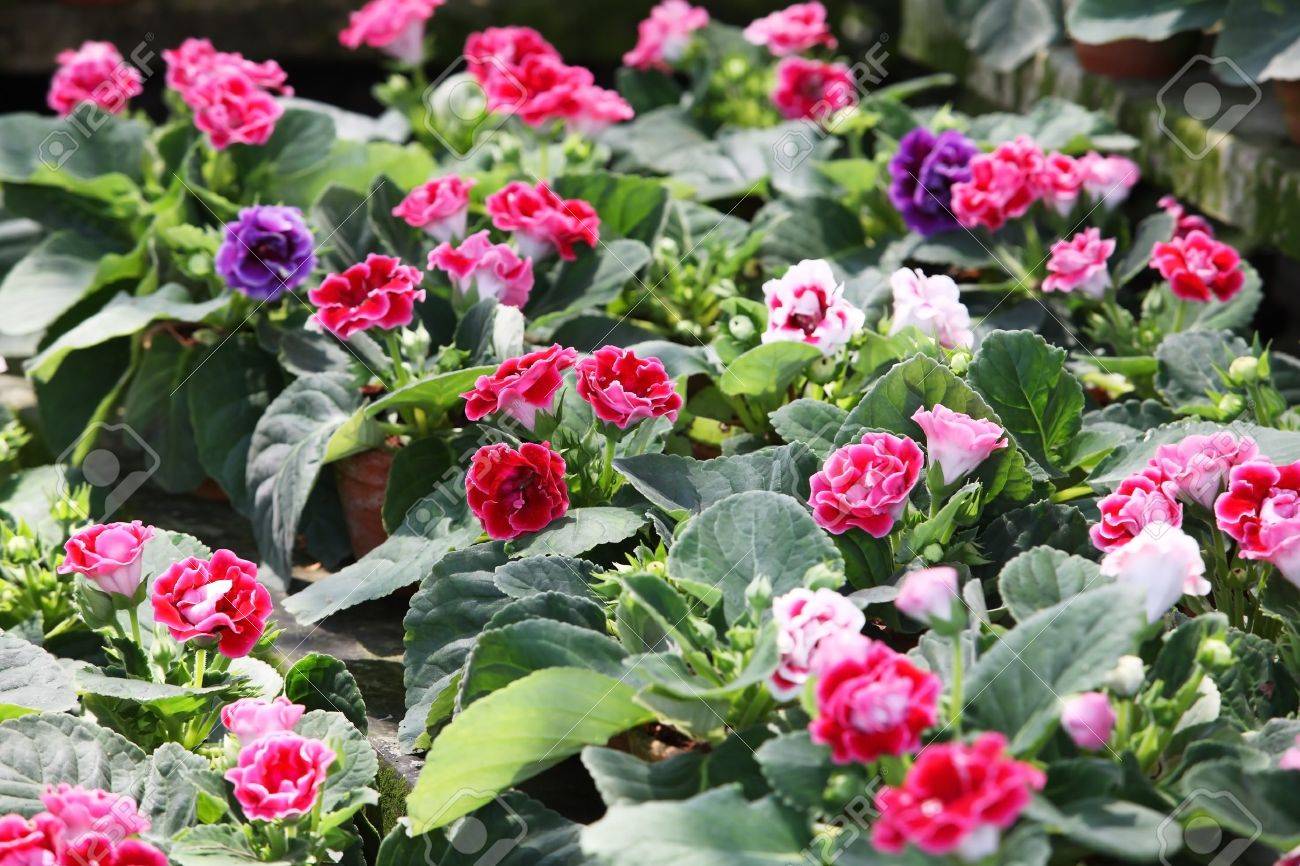
Diseases and pests of gloxinia exist, unfortunately, in the same way as in all indoor plants.
Signs and Causes of Illness
- The leaves turned yellow – an excess of sunlight and fertilizers, a violation of the air humidity.
- Brown spots on the leaves – applying cold water to water the plant.
- Pale leaves, gloxinia does not bloom – lack of nutrition and lighting.
Gloxinia Plant Pests and Control
- The spider mite is the most insidious pest. In this case, an urgent treatment of the plant with acaricides is required.
- Gloxinia can also be attacked by very unpleasant thrips and aphids, which can destroy the plant quickly. To combat these parasites, it is enough to spray the flower with an insecticide.
Subject to all of the above rules and tips, gloxinia will thank you for many years with the magnificence of its insanely beautiful flowering.






